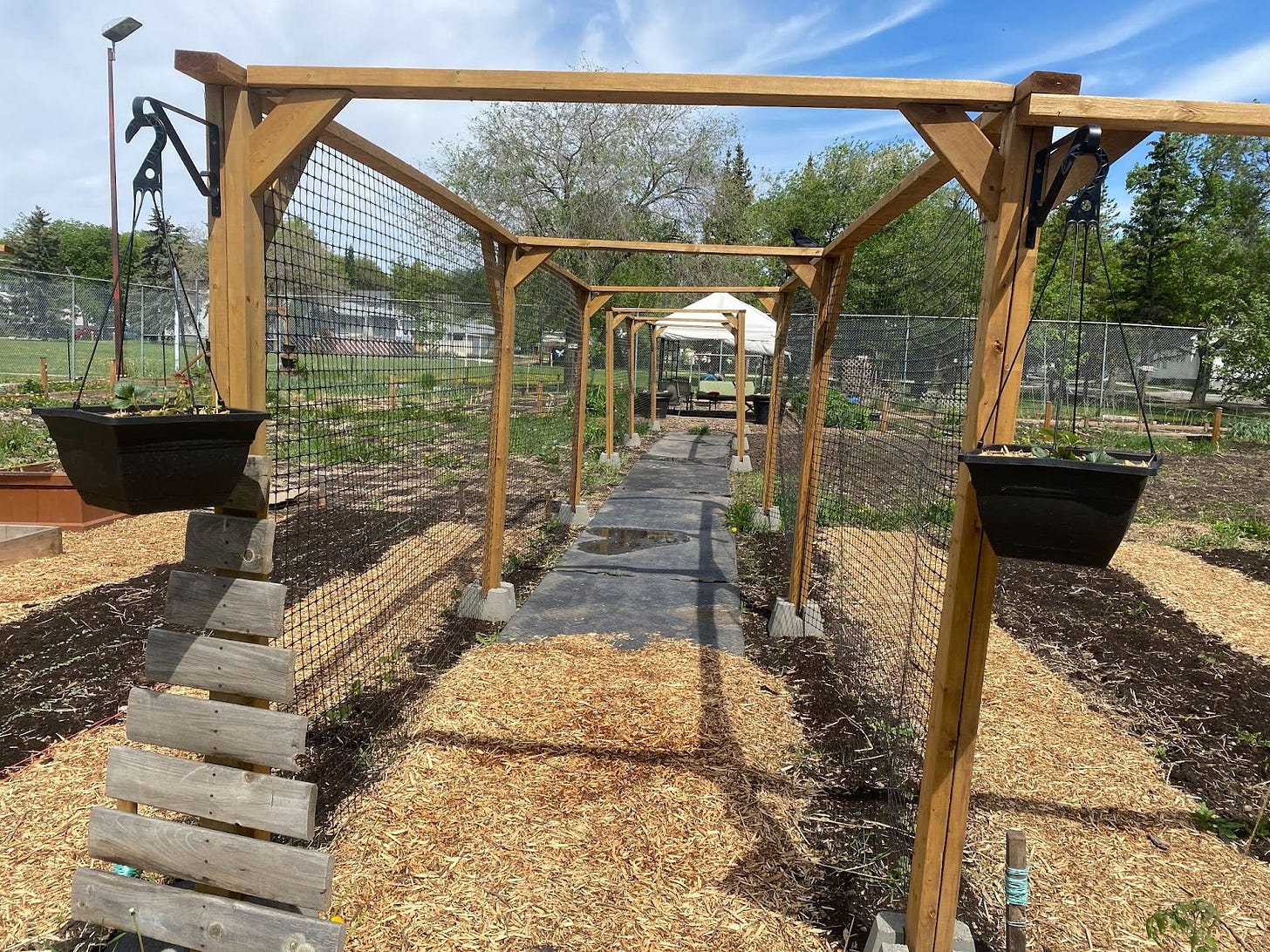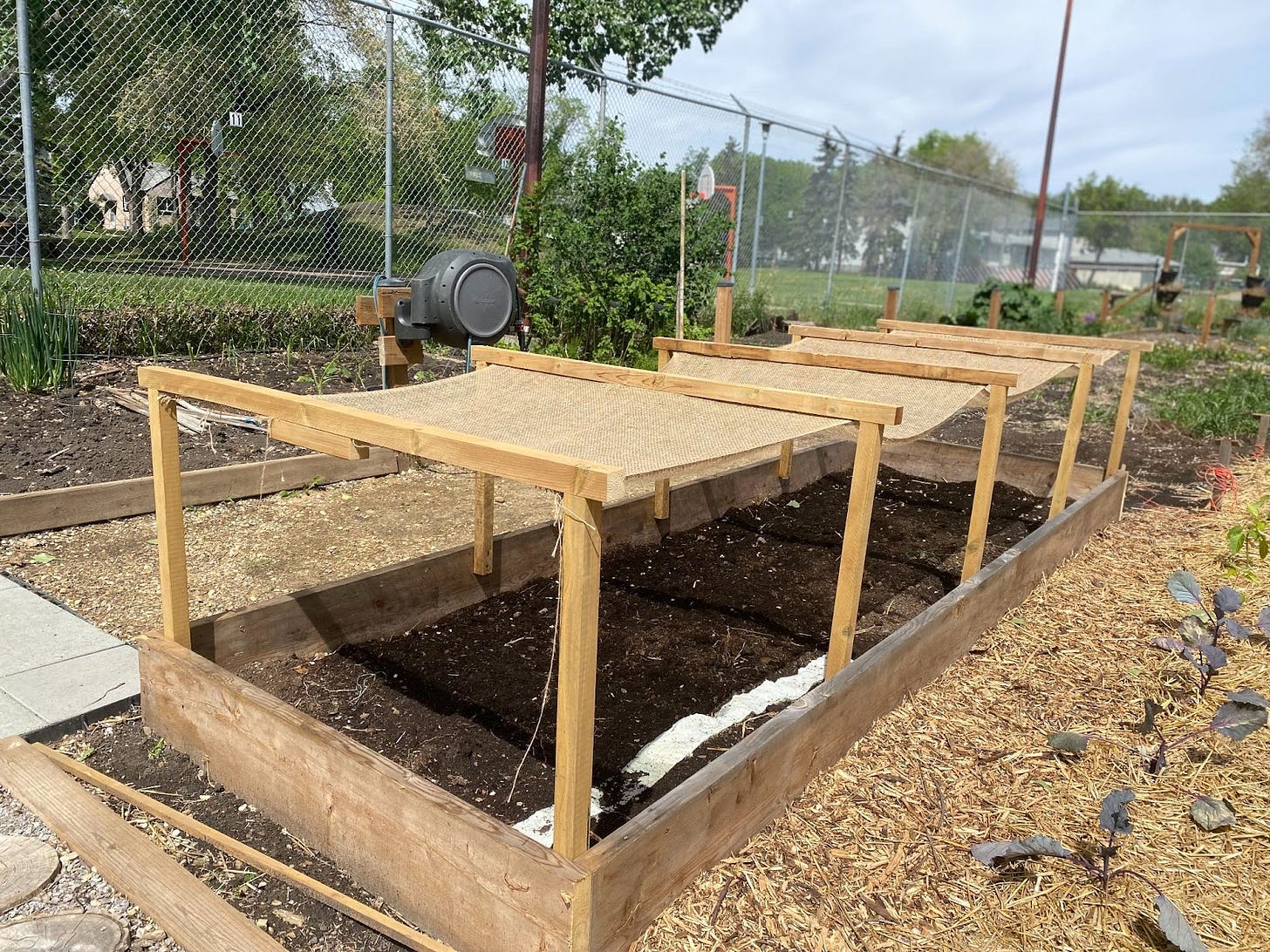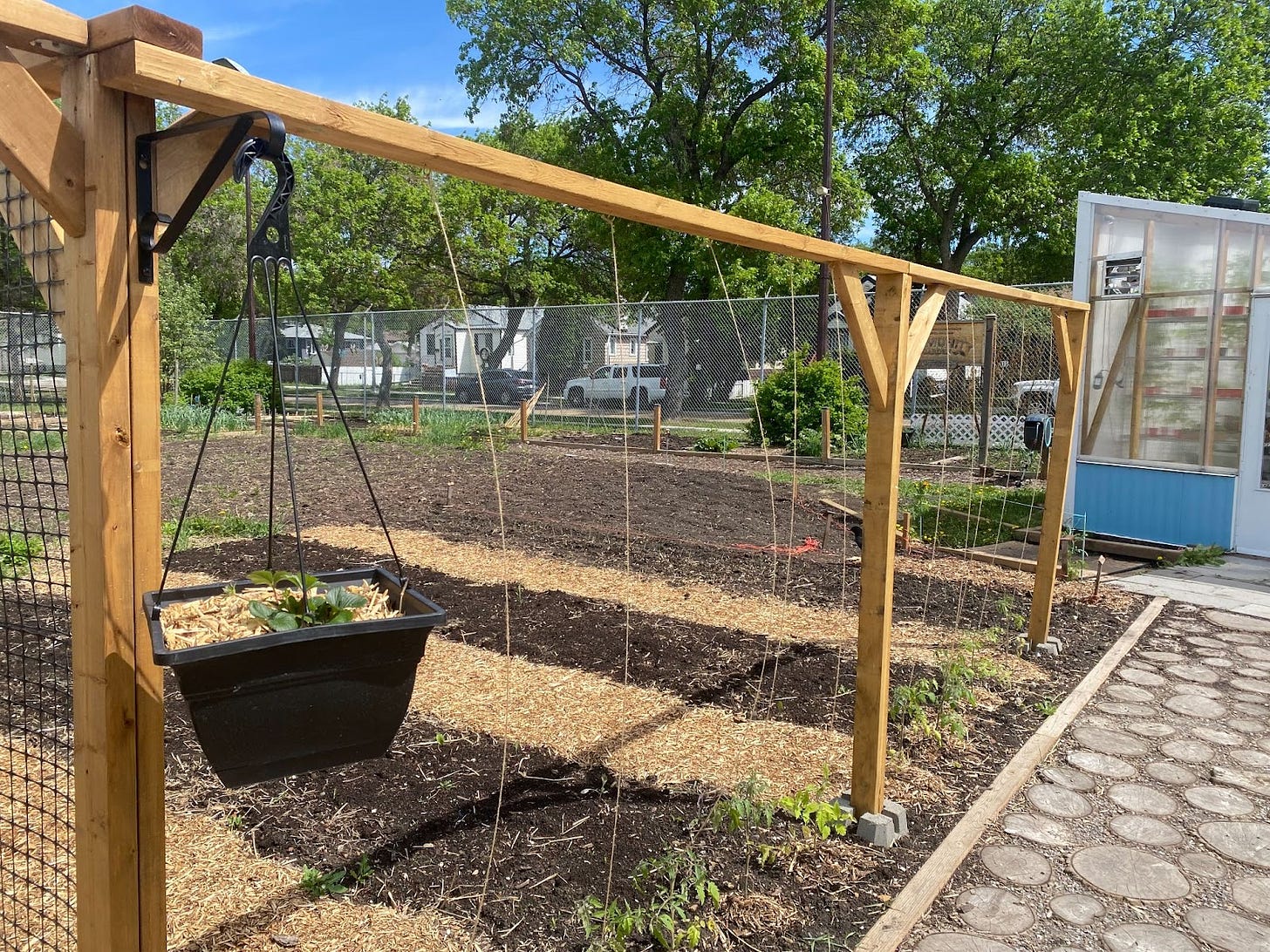With social media and image boards, it’s easier than ever to find yourself caught up in the aesthetics of gardening. But behind every winding path of perennials and planter beds are untold costs — money, time, and sanity.
Simply put, many of the spaces you will see online were made with aesthetics in mind. From hundreds of dollars in attractive annuals that are ill-suited to ground conditions, to paint jobs that won’t make it through the first hailstorm, social media gardening is selling a short-term dream. Those reclaimed door greenhouses will reach temperatures of 45 C or more in the summer sun, and those cute chicken coops made from old playhouses will collect more poop than they will likes in a few short weeks.
So, ask yourself: Are you willing to trade years worth of expensive repairs and upkeep for a few more internet points? If not, follow along for examples of backyard builds that stand up to the seasons while bringing some brightness to your day.
Trellises are a fantastic way to support growing plants. They can come in all shapes and sizes, from sticks woven with horizontal string in garden beds to walk-through structures like those at Growing Together.
When designing your trellis, there are two considerations you will have to keep in mind: the structural integrity of the vertical structure and the density of the plant-supporting material. If you’re digging your posts in, ensure approximately ¼ of the total length of the supporting arms is under the ground. If tethering to existing structures, use pressure-treated wood and coated deck screws to ensure a long-lasting joint.
For the interior material (what the plants will attach to), ensure that the weave is suitable for your plants to grasp. The thin tendrils produced by peas and cucumbers will struggle with thick lattices and prefer thin weaves like chicken wire or fencing. On the other hand, large vines like zucchini will grow excellently through large openings, making harvesting from both sides much easier if you go with 4”x 4 openings of cattle panels.
Raised Beds offer several advantages for home gardens — ease of harvest (especially for those with reduced mobility), reduced weed pressure, and infinite possibilities for arrangement. Best of all, they can be designed at a low cost to serve multiple needs like integrated seating, storage, or even space for pets.
The only thing chickens love more than being underfoot is being in your freshly tilled soil. To overcome the logistical nightmare of growing food alongside livestock, I constructed 4-foot-tall beds with fenced pens underneath. The visual barrier prevents the birds from hopping up into the beds of vulnerable transplants. At the same time, the pens underneath offer secure spaces to isolate and shuffle birds during coop cleaning or other chores.
The next step was to connect them. I constructed a small trellis out of PEX pipe and leftover fence materials. Additional vertical trellises at either end of the bed allow space for shorter vine plants like peas to thrive. This summer, I am using the shade from those plants to grow healthier lettuce crops — an idea I expanded on at the Alberta Avenue Community Garden in the next build.
In-ground planter boxes are inexpensive and durable, and can also be designed for specific crops to produce heavier yields.
Here, a burlap cover shades the lettuce box below, helping to maintain cooler temperatures and prevent bolting. At 4 feet tall, the posts allow ample room to reach in and harvest greens. When the season turns, a cover may be screwed to the top to prevent snow from piling on the cloth and tearing. It’s functional, but immensely satisfying to watch ripple in the breeze.
This community garden’s 12-foot by 12-foot build supports 30 vining tomato plants, multiple hanging planters, and a harvest-friendly design. Integrating odd angles for the horizontal supports lends a whimsical aesthetic, almost like walking below a tangle of roots. As the tomato plants mature and are staked to the twine, the inner tunnel will be shaded from light and wind, giving a sense of privacy and comfort in the blooms.
Building intentional garden structures involves creative thinking, an aesthetic eye, and a bit of planning to ensure your structures work towards your goals alongside your chosen plants' needs. Best of all, you don’t need an expensive setup, just some basic tools and a willingness to learn through mistakes — hopefully not as many as I’ve made over the years. Happy building!











Jacob, thank you for a fascinating and useful article. You are a gem of a writer and photographer.
Fascinating. THanks for sharing.